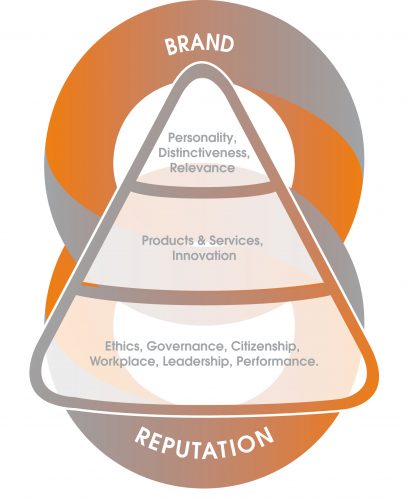
Why invest in reputation management?
I’m often asked by clients to help them build a business case to secure the budgets and resources required for effective, pro-active reputation management.
This is an executive summary that brings together key pieces of research that each look at the benefits of investing in corporate reputation management, much of which informs the work that I do when helping clients build their own business cases.
Below, I’ve summarised the case under three headings: Why do it?; Barriers to being effective at it; and How to do it well.
Reputation management – why do it?
- Corporate reputation is proven to be a major component of company value(1)
- Pro-active reputation management is a means to grow shareholder returns(1&5)
- A good reputation provides stakeholder support for your organisation in times of controversy or when launching new business strategies (such as entering new markets or segments)(2)
- When faced with a crisis, companies with good reputations are found to recover much faster – and often go on to greater success – than those with lesser reputations(3)
- A strong corporate brand supported by a good reputation drives customer preference in doing business with you when other companies’ products and services are available at a similar cost and quality(2&5)
- A strong reputation enhances a company’s ability to charge a premium for products and services(2&5)
- Companies with the strongest reputations are worth considerably more than those with the weakest reputations(4)
- Companies with strong reputations attract and retain the best people(5)
1. Reputation Dividend report by Simon Cole 2013
3. Good Governance report by Deborah Pretty and Paul Argenti
2. Kim Harrison “How to build a reputation” 2003
4. S&P500 data crossed with RepTrak studies 2011-2015
5. Harvard Business Review 2009.
Reputation Management, barriers to being effective at it:
- Reputation is an intangible and complex concept, which takes time and patience to change(2)
- The financial value of improvements to a growing reputation can be difficult to quantify(3)
- A lack of clarity around who is responsible for reputation(1)
- Senior management are too removed from reputation management(1)
- Reputation ranges over such a broad area of the organisation’s activities that it is difficult to allocate specific responsibility for work on enhancing the corporate reputation to individual functional areas(2)
- Senior managers are obliged to deal with more immediate and demanding operational priorities(3)
- Waiting for the crisis! – When things are good, there’s little motivation from leaders to invest time and resources in pro-active reputation building(1)
- Perceived cost and the lack of appreciation of the cost benefit equation.
1. Schillings Reputation Resilience Report 2015
2. Burson Marsteller reputation survey 2014
3. Kim Harrison “How to build a reputation” 2003
Reputation Management, how to do it well:
“Reputation resilience describes the ability of organisations to prevent, withstand and recover from negative reputation incidents.”
In a recent survey of FTSE350 executives, the two key factors behind a resilient reputation were thought to be:
- Doing business well so the reflection is truthful (i.e. no gap between perception and reality), and
- Having proactive, consistent and open relationships and communications with external stakeholders (regular high quality engagement).
To support this
- Functions must come together and align behind a clear vision set by the CEO
- This requires cross-functional collaboration between those responsible for corporate brand, strategy, communications, public affairs, marketing, HR, risk etc.
- For example Legal and Communications Directors use the vocabulary of accountants to try to display the exponential damage that a reputation incident can potentially cause, by measuring “market cap impact” or “value destruction”. They sometimes struggle to work together, particularly with the inherent tensions their different disciplines bring (legal want to delay saying anything or say nothing at all, communications want to say something and say it quick).
- Trust and reputation resilience should be built at an industry level
- This is an important consideration which is beginning to emerge in major companies’ risk management plans.
Through our analysis and real world experience in working with leading companies, we have identified six steps that can strengthen a corporate reputation through stakeholder engagement:
- Conduct in-depth research to know key stakeholders better (who are they, what do they want to see and hear from you in order to give their support)
- Assess strengths and weaknesses in stakeholder perceptions, and focus on the gap between those and the internal realities
- Research the main factors comprising the reputation of your organisation and align them with corporate strategy plus policies, systems and programmes in all functional areas. This produces a powerful re-orientation of priorities and behaviours
- Set plans to exceed stakeholder expectations.
- Involve the CEO as the greatest ally or champion of a reputation programme. The CEO must set the vision that the reputation programme then supports
- Measure regularly against targets and act to improve the results.
In the above points, I’ve borrowed heavily from the recent Schillings Reputation Report, but the approach reflects what we advocate at Tovera which is also mirrored in our approach when working with clients to build and protect corporate brand and reputation standing.

